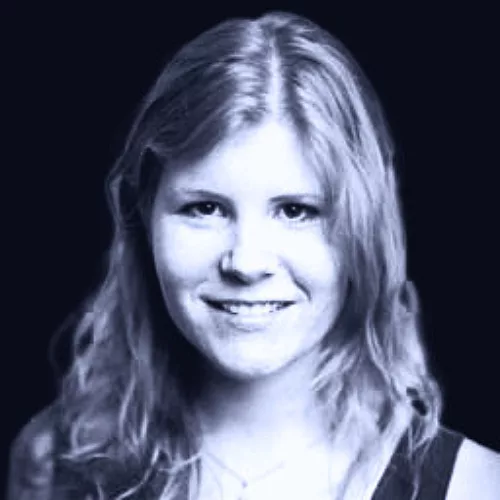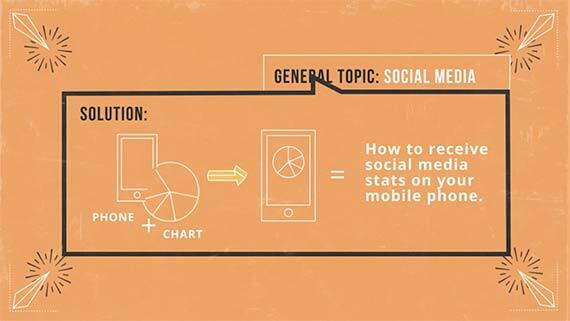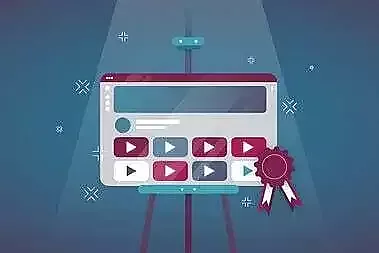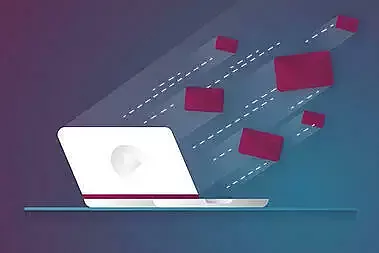Creativity is the means to success for companies – especially in marketing. Get to know the 5 best creative techniques for direct application in your project in this article.
No desire to read? Listen to the blogcast:
In this article you will learn...
- the 5 best techniques to take your creativity and marketing ideas to a new level.
- that creativity is teamwork and requires collaborative effort.
- how to achieve even more success with small tricks – on top of your great existing ideas.
Learning from the best: How can you work successfully and creatively?
Eureka! Give me a moment before you overflow with ideas.
This article about identifying great ideas – ideas that attract people's attention and stay put in their minds.
But with all the short stories on Facebook and Instagram, the blogs and videos on YouTube, the abundance of strategies and techniques and the possibilities on many other platforms like LinkedIn or Xing, the ability to really stand out seems almost impossible.
Don’t feel overwhelmed by the multitude of advertisements and bold slogans. With the flood of information and consumers’ short attention spans, people long for real, meaningful content that lures them out of the redundancy of their daily routines.
But in order to develop meaningful, touching, and sustainable concepts, we first need the right idea. The good news: you don’t have to be naturally creative to develop this idea.
Principle:
Creativity can be learned through the right techniques!
However, solid preparation and a pinch of flexibility are a must. This means leaving familiar concepts and thought patterns behind, including your preconceived limitations of your company.
Because creativity has proven payoff.
76% of all participants of a study conducted by Adobe stated that creativity yields better employees.
The aim of this article is to correct the latter indicator upwards.
 Open brainstorming: Is creative work always teamwork?
Open brainstorming: Is creative work always teamwork?
The preliminary work: What are the principles of good marketing?
One of the most renowned marketing authors is undoubtedly Brian Tracy. His work, "The 4 Principles of Marketing” embodies quintessential marketing in a particularly vivid way.
These 4 principles of marketing are:
- Specialization.
- Differentiation.
- Segmentation.
- Concentration.
Clearly explained: The 4 principles of marketing according to Brian Tracy.
Marketing is about people and what they want. This is exactly where you should start developing a marketing concept, and then look for creative ideas.
Just ask yourself the following questions:
In a nutshell:
Specialization: What is it about (product, company, market or person)? Who or what is presented to the customer? What makes your target unique?
Differentiation: Why and how is the product/company different and better than other products? Where is it in the market?
Segmentation: Where exactly are the customers in the market who appreciate your differentiation and are therefore ready to buy?
Concentration: Which ideas therefore concentrate on exactly these customers and address them in a targeted manner?
 Startup is easy with the right preparation: First define your marketing principles.
Startup is easy with the right preparation: First define your marketing principles.
Openness: your way to out-of-the-box thinking!
Many marketing departments still share the assumption that the brilliant idea for success can only be developed by the most creative thinkers—or that these ingenious people just formulate ideas after their first cup of coffee or in the shower.
Sure, that might happen occasionally.
But creativity is not a gene you must possess in order to develop creative ideas – completely on the contrary: Creativity and out of the box thinking is learnable! This is exactly what researchers at the University of Bologna have discovered:
Creativity learned: TEDx Talk about Out-Of-The-Box thinking.
And how do you start thinking out of the box? Let's start with a few basic rules.
In order to increase your own creativity productively, you should internalize the following steps and practice them repeatedly:
- Allow long thoughts.
- Resist the notion that the idea existed before.
- Search and find alternatives.
- Allow wrong answers.
- Do not judge.
Sounds rather abstract at first glance? Don't worry, we will substantiate each of these basics with concrete actions and tips in the course of this article.
We understand creativity above all as the interplay of individual and team work!
The goal is always to come up with a good idea together through the work of individuals (ideas, alternative suggestions, wrong answers, etc.).
For this, you need an open working atmosphere, where mistakes are accepted without judgement. Because the more open the team is, the more creative the result will be.
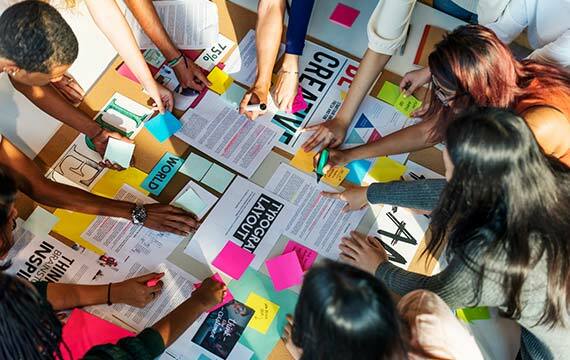 Structured creativity: preliminary work of the individuals, symbiosis in the team.
Structured creativity: preliminary work of the individuals, symbiosis in the team.
Let's go: Here come the 5 best creativity techniques.
There is a wide range of creative tools that you can use to develop good ideas or find answers to all the questions you ask yourself during the development phase of a marketing concept.
But no matter which tool or creativity technique you ultimately use in your company, always observe the following basic rules for successful cooperation with your team during the creative phase:
- Do not express any criticism during the initial idea search.
- Idea development & idea evaluation must be separated.
- Avoid hierarchical thinking.
- Quantity comes before quality.
- Build on the ideas of others rather than just focusing on your own.
In the following section, we discuss the Top 5 creativity techniques for innovative marketing!
Technique #1: The 6-3-5 Brainwriting.
With the help of 6-3-5 Brainwriting, you develop ideas with all participants and write them on a sheet of paper, similar to classical Brainstorming or Mind-mapping.
What you need:
Participants: 6.
Time: 1.5-2 hours.
Materials: posters (Din A2 or larger) and pens.
A video explaining the 6-3-5 method.
Step 1: Each of the 6 participants writes 3 ideas on a piece of paper at the same time. When they are all finished, they pass their sheets clockwise to the person sitting next to them.
Step 2: He/she grabs the 3 ideas and develops each of them with their own train of thought.
Step 3: Then papers are passed on again to the next person, who then develops the existing one further and notes their new ideas on the same sheet of paper.
Step 4: This process is carried out a total of 5 times – each person’s idea paper, with 3 initial ideas, is therefore developed and expounded upon by 5 other people.
At the end of the round, you hold 6 papers with a total of 108 ideas (6 persons x 3 basic ideas x 6 variants) in your hands.
The 6-3-5 brainwriting clearly focuses developing and refining of basic ideas and thus developing completely new trains of collaborative thought as a team.
Technique #2: The "Yes, and..." method.
The creativity technique ,”Yes, and..." originates from improvisation theatre and is intended to encourage you and your team to say "Yes, and then..." to everything.
What you need:
Participants: at least 2
Time: 30 minutes-1 hour
Materials: Chairs, a recorder
Step 1: A person from the team expresses a word or an idea.
Step 2: The next person accepts this idea ("Yes") and adds a spontaneous association or new idea ("and then").
Step 3: The person then accepts the ideas given and continues to expound upon them. This process continues until you have a story that you want to use.
 “Yes, and…”: Openness as a basis for creativity.
“Yes, and…”: Openness as a basis for creativity.
The goal of this creative technique is to validate and explore all spontaneous ideas. Everyone is actively and creatively involved. Thus all possible styles and ways of thinking are integrated. Through spontaneity, acceptance, and validation of each other, your group develops together more innovative concepts and stories that go beyond the horizon of everyday thinking and doubt.
Technique #3: The Right Braining.
Right Braining helps you to form new associations and thereby generate new ideas. You can work in a team, but this creative technique is also great for brainstorming before a team meeting.
What you need:
Participants: at least 1 person
Time: 30 minutes or longer
Materials: paper, pens, scissors and glue
Right Braining (from 0:42) vividly explained.
Step 1: Let your mind play by drawing incomplete sketches and pictures. Think of an umbrella term like "social media,” and draw all (incomplete) associations with the term.
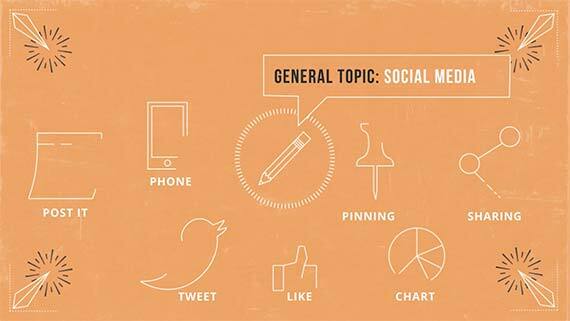 Step 1 of Right Braining: Incomplete Drawing.
Step 1 of Right Braining: Incomplete Drawing.
Step 2: Now take the different drawings and combine them. Incorporate them so that new connections become visible.
This technique provides you with new connections to already existing basics and thus boosts your creative ability to associate.
Technique #4: The headstand technique.
With the headstand technique, you can develop new solutions through the targeted reversal of tasks. We recommend that you carry out the exercise in groups and then present the results in the form of a presentation.
What you need:
Participants: at least 2.
Time: 45 minutes.
Materials: posters (Din A2 or larger) and pens.
Step 1: Write a central question to answer the new marketing idea or solution. Example: How can we satisfy more customers?
Step 2: Your counterpart turns the question upside down and asks the other way around: "What can our customers do for us?” It is best to write this question on a poster so that all the answers can be listed below. An answer to our example question would then be: "You can tell us your wishes online at any time".
Step 3: On the poster, all participants write down their solutions and ideas on how the answer can be put into practice. A solution in our example would sound like this: "We connect our website with Instagram and develop stories with targeted surveys. Participants have the opportunity to win something small to increase positive interaction”.
 Turning things upside down helps: a change of perspective promotes creative ideas for solutions.
Turning things upside down helps: a change of perspective promotes creative ideas for solutions.
Alternatively, the headstand method can even be used with the negative counterpart of a question. For example, "How do we improve the packaging design of our yogurt?” becomes the negative variant, "How would we make our design worse?
Once an answer to the negative question has been identified, the answer is also reversed, providing a possible solution to the actual question at hand.
This opposing perspective of a problem leads all participants to change their perspective and look at problems from a new angle. New and exciting impulses are created by answering the question, which can be used for innovative problem solutions.
Technique #5: The Six Thinking Heads Method.
The Six Thinking Heads method is somewhat more complex than the previously presented method and takes time. However, it helps to discuss well-founded ideas from different perspectives and to solve critical problems and conflicts. This creativity technique is comparable to a role play.
What you need:
Participants: 6
Time: 1-2 hours
Materials: 6 hats in 6 colors (white, red, black, yellow, green, blue), Pen and paper
ed: Cap desired: Video explaining the Six Thinking Hats method.
Step 1: Assign the hats! Each hat or color stands for a basic setting that the hat wearer must adhere to during the entire process. By the way, this does not necessarily have to be hats. You can also use chairs that represent the respective color and roll. The colors are the following:
- White – The Analyst: This person collects facts and forms an opinion free of emotions and prejudices.
- Red – The Emotional: This person bases his argumentation on emotional points of view and clearly expresses his feelings. The emotions can exhaust the entire spectrum from positive to very negative.
- Schwarz – The Critic: This person criticizes, and looks for weaknesses, mistakes, and risks. A real pessimist, but without the emotions of "the emotional.”
- Yellow – The Optimist: The optimist does the exact opposite of the critic. Without many emotions, he sees the positive, the strengths, and opportunities, accepts suggestions and ideas, and delivers pro-arguments.
- Green – The Creative: This person must identify new methods and thoughts—“out of the box”—and above all, provide new motivation. In creativity, a little madness and provocation is also allowed!
- Blue – The Structured: The only view for this person is the big picture. As a group leader, he or she leads the discussion, summarizes statements, and makes decisions. The decisions to be made are, for example, the exchange of roles, the search for targeted solutions to a topic, or the ending of certain discussions.

Different colored hats as role symbols: the core of the "Six Thinking Hats" method.
Step 2: After the roles are successfully distributed, discuss the question or problem from each assigned point of view. Each hat is allowed to speak for a maximum of 2 minutes at a time. The discussion process is divided into sequences. The group decides how many different sequences are needed and in what order they should be used. Each sequence is started and finished with the blue hat. The individual sequences are structured in this way:
- Present the first ideas: blue - white - green - blue
- Choose between alternatives: blue - white - (green) - yellow - black - red - blue
- Search for solutions: blue - white - black - green - blue
- Give quick feedback: blue - black - green - blue
- Strategic planning: blue - yellow - black - white - blue - green - blue
- Process improvement: blue - white - white (other perspectives) - yellow - black - green - red - blue
- Solve problems: blue - white - green - red - yellow - black - green - blue
- Performance rating: blue - red - white - yellow - black - green - red - blue
 Many heads, many perspectives: Creative role play regardless of personal opinions.
Many heads, many perspectives: Creative role play regardless of personal opinions.
Step 3: After the discussion, the facilitator (blue hat) presents an overview of the outcome of the discussion and all the ideas mentioned. Then, under the guidance of the facilitator, everyone searches together for solutions to the points raised.
The "Six Thinking Hats" creativity technique is a fantastic method to help all participants to motivate, form opinions, and lose inhibitions and blockages. The core of the game is to be free and not condemn others, as everyone only plays a role.
The added value behind creativity.
Creativity and creative techniques are not only applicable for creative purposes. In addition to brainstorming and innovation, they can be used to achieve a variety of goals.
These include conflict resolution, mediation, the dissolution of blockades, or the establishment of team loyalty.
Creativity is valuable in many applications! For companies, this means that they should invest more in creative work, no matter in which sector they offer services.
The following facts underline how important this is:
- 83% of all respondents are convinced that the creativity of a company contributes to its overall value.
- 85% of employees and employers expect companies that invest in creativity to be more productive; 84% even expect happier employees.
- The vast majority of respondents believe that investing in creativity favors innovation (88%), creates more satisfied customers (86%), increases competition (85%), and creates financial success (79%).
- 79% of consumers believe that creative design and marketing reinforce a strong brand identity.
 Genuine added value: Creativity demonstrably contributes to the success of companies.
Genuine added value: Creativity demonstrably contributes to the success of companies.
What are you waiting for?
You are now well prepared to start your next project with a new creative energy. Simply select the creative technique that best suits your needs.
If you take the tips and tricks listed in this article for a productive collaboration to heart, nothing stands in the way of your creative project success.
We at Mynd are home to a large creative department and face the daily challenge of meeting difficult questions and customer wishes with exceptionally innovative ideas.
We also use the creativity techniques mentioned in this article and can therefore warmly recommend them to everyone.
If you need creative support for your project, we look forward to talking to you! Contact us here »

